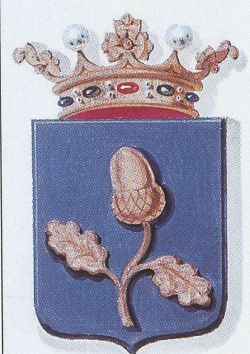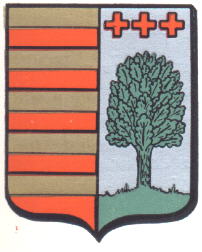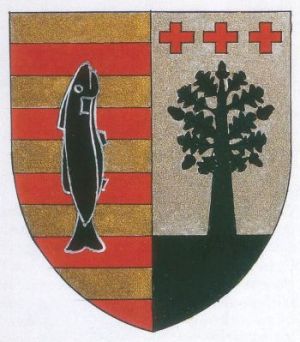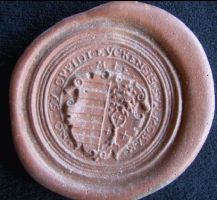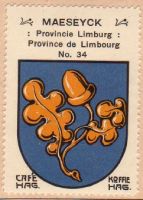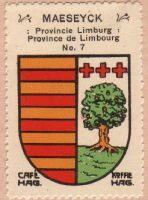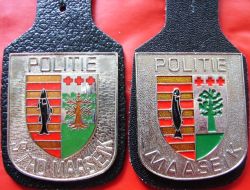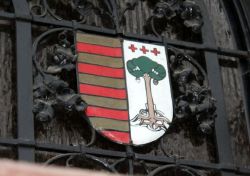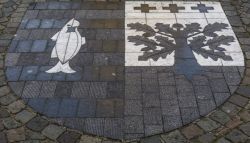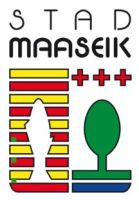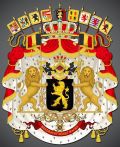Maaseik
|
Country : Belgium Province : Limburg Additions :
|
| Dutch |
|
| French |
|
| English | blazon wanted |
Origin/meaning
The arms were first granted on December 21, 1819 and slightly changed on December 12, 1846. New arms were granted in 1909 and again on January 22, 1981.
The first arms from 1819 and 1846 show a canting oak branch (eik=oak). As no historical colours were known, the arms were granted in the Dutch national colours. After the Belgian independence the arms were continued, but with a different crown.
In 1909 the arms were changed based on the old seal of the city of Nieuw Eik.
The village of Nieuw Eik (later Maaseik) received city rights in 1386, but the whole surrounding area remained part of the County Loon. Both areas were ruled by the same council though. The council used the seal of the city which, from 1369-1423, showed a shield divided of Loon (bars) and an oak branch, see below. In the 16th century the city used a seal with new arms, instead of the oak branch an oak tree and three crosses was used. The meaning of the crosses is not known. During the centuries the crosses were placed in, around or above the oak tree. In 1909 they were placed above the tree.
The 1981 arms combine the fish of the arms of Neeroeteren with the previous arms of Maaseik. As Opoeteren also used a combination of fish and the red and golden bars of Loon, all three municipalities are represented in the new arms. The fish is black, but the municipality generally uses the arms with a silver fish.
The 1846 arms in the Koffie Hag/Café Hag albums +/- 1930
The 1909 arms in the Koffie Hag/Café Hag albums +/- 1930
The arms on a police badge (source)
Literature: Servais, 1955; new image provided by Rudy Vanhorenbeeck, Belgium.
Belgium heraldry portal
This page is part of the Belgium heraldry portal |
Heraldry of the World |
|
Civic heraldry:
|
Other heraldry: |
Contact and Support
Partners:
Your logo here ?
Contact us
© since 1995, Heraldry of the World, Ralf Hartemink 
Index of the site

